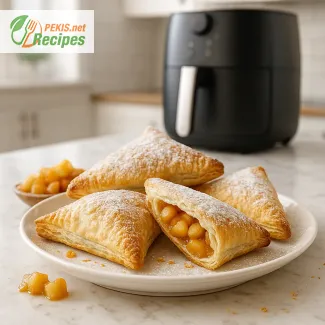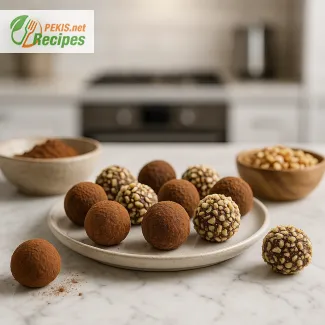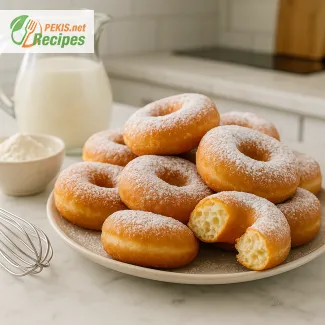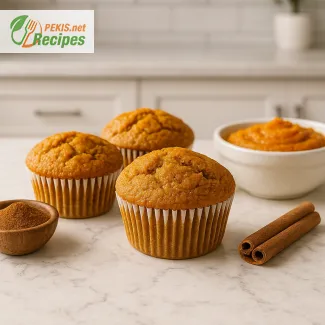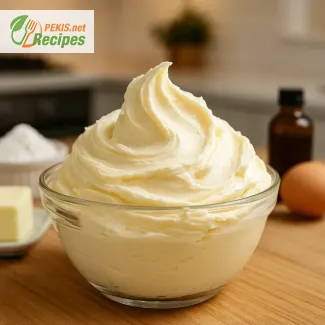
Perfectly Fluffy and Silky Vanilla Buttercream for All Your Cakes
A timeless frosting that brings out the best in every dessert
When it comes to crafting the perfect frosting for layer cakes, cupcakes, or filled pastries, vanilla buttercream frosting stands out as a classic choice that has stood the test of time. Its light, airy texture, rich yet balanced sweetness, and smooth, creamy consistency make it an essential component in the world of baking. Whether you’re celebrating a special occasion or simply indulging in an afternoon treat, a homemade vanilla buttercream adds a touch of elegance and warmth to every bite.
This type of frosting isn’t just beloved for its taste. Its adaptability makes it ideal for everything from piping intricate decorations to layering between sponge cakes. Vanilla buttercream complements a wide range of desserts—chocolate cakes, red velvet cupcakes, lemon sponge, or even macarons. Its delicate flavor enhances without overpowering, making it a versatile staple in both home kitchens and professional bakeries.
What makes vanilla buttercream so essential in baking
At the heart of every excellent vanilla buttercream lies the balance between unsalted butter, powdered sugar, and pure vanilla extract. These core ingredients are simple, yet when combined in the right proportions and technique, they create a frosting that is both light and stable, suitable for every decorating need.
Buttercream is not all created equal. There are several styles, from American and Swiss meringue to French and Italian buttercreams, but classic vanilla buttercream frosting—sometimes referred to as American buttercream—is the most popular because it’s easy to make, requires no cooking, and delivers consistent results every time.
The key to achieving the ideal texture is in the whipping process. Properly aerated butter results in a frosting that’s fluffy and easy to spread, with a delicate, melt-in-your-mouth feel. Using high-quality butter and real vanilla elevates the flavor profile, giving it depth and richness while still maintaining a clean, smooth taste.
Ideal occasions to use vanilla buttercream
There’s hardly a baking moment where vanilla buttercream doesn’t shine. It’s a go-to frosting for birthday cakes, wedding cupcakes, anniversary layer cakes, or even just a sweet afternoon snack. Its neutral base also allows bakers to add food coloring or infuse it with other flavors like citrus zest, almond extract, or even espresso powder to complement different cake flavors.
Because of its forgiving texture, vanilla buttercream is excellent for both spreading and piping. Whether you want smooth finishes on a tall layer cake or detailed rosettes on cupcakes, it holds its shape beautifully. The frosting is sturdy enough to create well-defined borders but soft enough to provide a delicate mouthfeel.
Common issues and how to avoid them
Even though this frosting is relatively simple, certain missteps can affect the final result. Overmixing can cause the buttercream to become too soft, especially in warmer environments. On the other hand, undermixing can leave it gritty. The right mixing time is key to achieve that perfectly fluffy, smooth consistency.
Using room temperature butter is also critical. Butter that’s too cold won’t whip properly, while butter that’s too soft can lead to a runny frosting. Sifting the powdered sugar beforehand helps eliminate lumps and creates a more refined texture.
For a richer, silkier finish, some bakers like to add a splash of heavy cream or milk, which not only smooths out the texture but also improves spreadability. Others add a pinch of salt to balance the sweetness and highlight the flavor of the vanilla.
Why vanilla buttercream remains a timeless favorite
There’s a reason vanilla buttercream frosting has remained a classic across generations. Its uncomplicated ingredients, paired with its luxurious texture and adaptable flavor, make it a staple for bakers of all skill levels. Whether you’re making a multi-tiered wedding cake or a quick batch of cupcakes, this frosting delivers both beauty and taste.
Its aesthetic appeal, ease of preparation, and delicious flavor profile ensure it will never go out of style. This makes it not only a must-have in any baker’s repertoire but also a recipe that gets requested time and time again.
For anyone seeking a reliable and indulgent frosting that works for every occasion, classic vanilla buttercream frosting is the answer. With just a few ingredients and the right technique, you can achieve a smooth, creamy, and utterly irresistible finish to any baked creation.
1. Prepare the butter:
Take the unsalted butter out of the refrigerator and allow it to soften at room temperature for about 30 minutes. The butter should be soft enough to press a finger into it easily but not melted. Cut it into small cubes for easier mixing.
2. Whip the butter:
Place the softened butter into a large mixing bowl. Using a stand mixer or a hand mixer with the whisk attachment, beat the butter on medium speed for 5–7 minutes until it becomes pale, fluffy, and smooth. Scrape down the sides of the bowl as needed.
3. Add the sugar gradually:
Reduce the mixer speed to low and start adding the sifted powdered sugar in batches (about 100 g at a time). Beat after each addition until fully incorporated before adding more. This prevents the sugar from clouding and ensures a silky texture.
4. Add vanilla and milk:
Once all the sugar has been added, pour in the vanilla extract and milk. Increase the mixer speed to medium-high and continue beating for another 2–3 minutes. The frosting should be light, airy, and easy to spread or pipe.
5. Adjust consistency:
If the buttercream is too thick, add a little more milk (1 tsp at a time). If it’s too soft, add a tablespoon of powdered sugar. Taste the frosting and optionally add a pinch more salt if the sweetness needs balancing.
6. Use immediately or store:
Use the buttercream right away to frost your cake or cupcakes. If storing, cover and refrigerate for up to 5 days. Before using, bring it back to room temperature and re-whip for best texture.
Transforming Your Vanilla Buttercream into a Flavor Masterpiece
Simple enhancements for richer taste, better texture, and healthier results
Vanilla buttercream is beloved for its smooth, creamy texture and timeless appeal. But even the most traditional recipe can be elevated with small, thoughtful changes. By adjusting key ingredients or refining your technique, you can unlock new levels of flavor, structure, or even nutritional balance. Whether you're aiming for a more intense vanilla profile, a less sugary option, or simply a buttercream that’s easier to work with, a few strategic upgrades can make a big difference.
Use real vanilla for deeper flavor
While most recipes call for vanilla extract, switching to pure vanilla paste or scraped vanilla bean intensifies the flavor and adds depth. Vanilla paste has a stronger concentration and gives buttercream a more complex and aromatic finish, while real bean flecks provide visual appeal, adding a sense of luxury and craftsmanship to your frosting. For budget-conscious alternatives, ensure that your extract is pure and alcohol-based, not imitation.
Add a pinch of salt or citrus to balance sweetness
Buttercream can become overly sweet, especially for adult palates. A pinch of fine sea salt does more than balance—it brings out the butter’s natural richness and rounds out the sugar. For a brighter twist, add lemon zest or a few drops of fresh lemon juice. The citrus cuts through the sweetness and enhances the frosting’s vibrancy, especially when paired with fruit-based cakes.
Choose the right butter for better results
Not all butter is created equal. For a smoother texture and better stability, use European-style butter with a higher fat content. This type of butter yields a silkier finish and a more buttery, luxurious flavor, especially important in recipes where butter is the hero. Make sure it's unsalted and softened—not melted or overly warm—to avoid splitting.
Incorporate cream for enhanced texture
If your buttercream tends to feel dense or gritty, adding heavy cream (about 15–30 ml / 1–2 tbsp) can help create a lighter, more whipped consistency. The cream adds richness and improves spreadability without diluting flavor. Alternatively, for a more neutral base, whole milk can be used, but cream offers a fuller mouthfeel.
How to reduce sugar without losing structure
For those watching sugar intake, reducing powdered sugar can be tempting, but it's crucial to maintain structure. One solution is to replace some sugar with cornstarch, which helps stabilize the frosting. Another approach is to use less refined sugars, such as coconut sugar or maple sugar, though this can affect color and flavor. Be aware that sugar provides both sweetness and body—reduce it too much, and your frosting may collapse or separate.
Go dairy-free with smart substitutions
To make the recipe suitable for those with lactose intolerance or dairy allergies, replace butter with a high-fat, plant-based alternative. Vegan butters made from coconut oil or avocado oil are now widely available and can deliver a similar texture if whipped correctly. Use non-dairy milk like almond, oat, or soy—preferably unsweetened—for the liquid component. These substitutions will slightly alter the flavor but can still create a delicious, creamy frosting.
Avoid common mistakes that ruin buttercream
- Using cold butter: This leads to lumps that won’t fully incorporate. Always use butter softened to room temperature.
- Overmixing: Once all ingredients are combined, stop mixing. Overmixing can cause the buttercream to become greasy or lose structure.
- Skipping the sugar sifting: This causes a grainy texture. Always sift powdered sugar to ensure smoothness.
- Adding too much liquid: This results in a runny frosting. Add liquids slowly and only as needed.
Infuse flavor variations for creative twists
Vanilla buttercream is a great foundation for flavor infusions. Try mixing in:
- Espresso powder for a rich mocha version
- Cocoa powder or melted dark chocolate for a chocolate variation
- Almond extract for a sweet, nutty depth
- Crushed freeze-dried berries for color and tartness without added moisture
Each of these additions brings a new personality to the frosting without requiring structural changes.
Why homemade buttercream outperforms store-bought
Prepared frostings may seem convenient, but they often contain preservatives, artificial flavors, and excess stabilizers. In contrast, homemade vanilla buttercream allows you to control every ingredient, ensuring a fresher, purer flavor. The taste of real butter and quality vanilla simply can’t be replicated in commercial tubs. Plus, making it yourself allows for customization—something pre-made options can't provide.
Homemade buttercream is also better for decorating. It pipes more cleanly, holds its shape longer, and can be easily re-whipped if needed. Whether you're frosting a rustic layer cake or piping intricate borders on cupcakes, a freshly whipped batch offers better control and visual elegance.
Healthier alternatives that still taste indulgent
If you're looking to reduce the caloric load without sacrificing taste, consider these changes:
- Replace a portion of butter with Greek yogurt for added protein and tang.
- Use plant-based butters that are lower in saturated fat.
- Opt for powdered erythritol or monk fruit sweetener as sugar alternatives. These maintain structure with fewer calories, though they can have cooling aftertastes.
These changes won’t mimic the classic texture perfectly, but they offer a way to enjoy buttercream with fewer compromises.
Elevating your vanilla buttercream means understanding the chemistry behind each ingredient and recognizing how subtle shifts affect the whole. Whether your goal is better flavor, smoother texture, or dietary flexibility, knowing your options allows you to create a buttercream that’s both personal and professional. Making these enhancements ensures your frosting is not just an afterthought—but a feature that brings your baked creations to life.
Allergens present in the recipe:
- Milk (dairy)
- Butter (dairy)
Gluten:
- This recipe is gluten-free as written.
Substitution tips for allergens and gluten:
- To make dairy-free: Replace butter with plant-based margarine and milk with almond milk or oat milk.
- To ensure complete allergen safety: Use a certified dairy-free butter alternative with high fat content.
Vitamins and minerals per serving (approximate):
- Vitamin A: 355 µg – Supports vision and immune function
- Calcium: 12 mg – Important for bone health
- Iron: 0.1 mg – Supports oxygen transport
- Potassium: 12 mg – Regulates fluid balance and nerve signals
- Vitamin D: 3 µg – Aids calcium absorption and immune support
- Phosphorus: 10 mg – Helps maintain strong bones and teeth
- Vitamin E: 0.3 mg – Protects cells from oxidative damage
Antioxidants per serving (approximate):
- Vanillin: 2.5 mg – Exhibits mild antioxidant and anti-inflammatory properties
- Vitamin E: 0.3 mg – Helps combat oxidative stress in cells
- Phenolic compounds from vanilla extract: trace amounts – Contribute to flavor and may support overall cell protection
